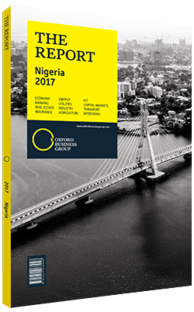Nigeria creates pension plan to cover informal workforce
Given Nigeria’s large informal workforce – estimated by the IMF to contribute 50-65% of GDP – a significant segment of the population is not captured by the country’s pension scheme. Without some form of pension, this portion of the population becomes increasingly financially vulnerable with age. To combat this, Nigeria has taken steps to institute a micro-pension scheme similar to plans in India and Kenya, countries that also maintain large informal workforces. Nigeria’s primary national pension programme, the Contributory Pension Scheme (CPS), currently only covers those who are in the formal workforce. However, a provision in the Pension Reform Act of 2014 opened the door to the possibility of extending the CPS to cover those who work in the informal economy.
In The Works
A micro-pension scheme to reach informal workers is still in development, and pension fund administrators are awaiting programme guidelines. Regulations were expected to be released by the Pension Commission (PenCom) during the second half of 2017, with the aim of having the pilot phase under way by the end of the year. A draft of the regulations was issued by the National Insurance Commission in July 2017 to gather feedback from industry stakeholders. While the final rules are being formulated, fund administrators have been busy developing products and services targeting the informal sector.
The CPS in its current form is managed through payroll contributions. The micro-pension programme, by contrast, is designed to capture all independent workers, regardless of income or the size of pension contributions. The label, however, may not fully capture the scope of the programme, and can conjure an image of small-scale contributions chiefly made by those towards the bottom of income distribution. The scheme targets low-income informal earners, as well as self-employed business owners and entrepreneurs who earn higher incomes, but are nevertheless not a part of the formal economy. To combat misconception, PenCom and the fund administrators are considering renaming the programme Informal Sector Pension in an effort to capture the entirety of their target population.
“We have to first segment the market into low, medium and high earners, just as in the formal sector,” Tunde Ottun, head of strategic planning and corporate communications at AIICO Pension Managers, told OBG. “While many contributors will be small, you will also have independent business owners who are relatively wealthy and who can provide good volume, but are still a part of the informal sector,” he added.
Reaching Out
Lower-income members of the informal sector can also be difficult to capture. Pension fund administrators are considering methods to educate the community, build trust and encourage participation. Other financial inclusion efforts have shown that lower-income earners in the informal sector tend to be more comfortable operating through already established community and professional associations, at least in the very beginning. The success of mobile money has been a proven avenue to reach those currently outside of the formal banking structure. Administrators are looking to form partnerships with these associations and mobile money operators to build relationships and provide a platform for insurance transactions that may be very unfamiliar to its target market.
Bigger Picture
Approximately 10% of the formal workforce is currently covered by the CPS, and PenCom has set its sights on growing that coverage to 30% of the entire labour force – both formal and informal – by 2024. Achieving this goal would not only provide a greater safety net for the population as a whole, but would also substantially increase the pension industry’s assets under management. These additional assets could be mobilised to fund large-scale investment projects throughout the country. Ottun told OBG, “Pension industry funds, along with federal government funds, are what will develop the economy beyond where it is right now, especially in regards to infrastructure.”
You have reached the limit of premium articles you can view for free.
Choose from the options below to purchase print or digital editions of our Reports. You can also purchase a website subscription giving you unlimited access to all of our Reports online for 12 months.
If you have already purchased this Report or have a website subscription, please login to continue.

